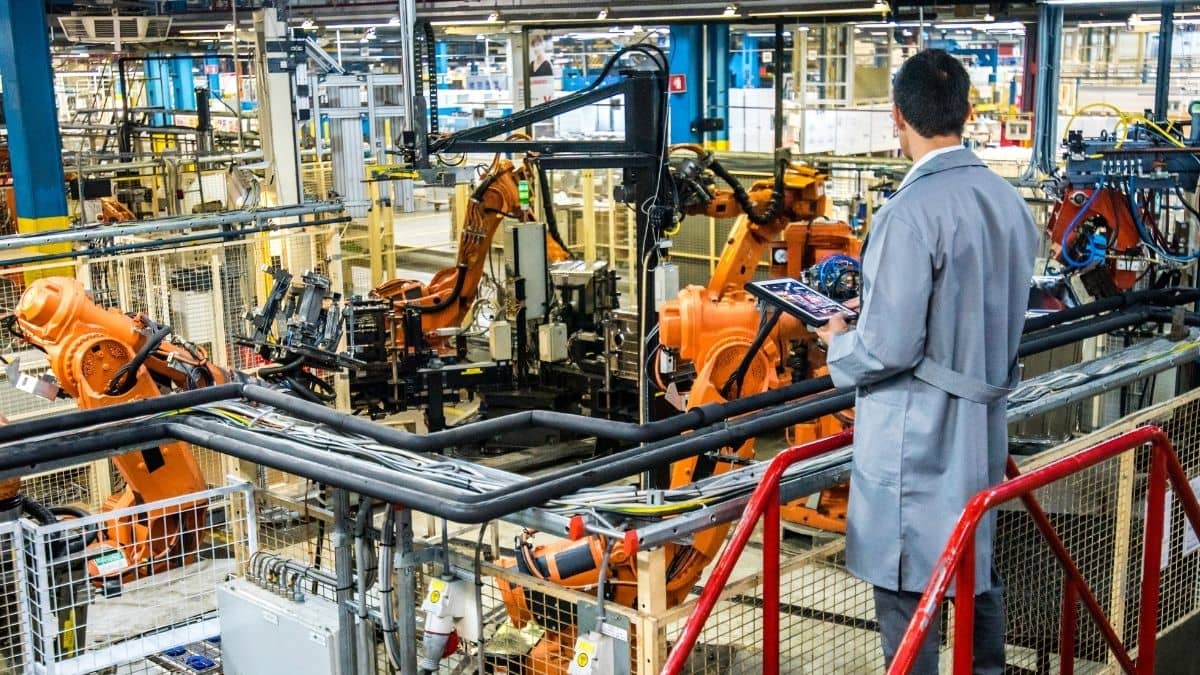Operational Performance Objectives: Why do we need them?
| Written by Mark Buzinkay

No video selected
Select a video type in the sidebar.
As a business, we invest many resources, energy and time to succeed. But our quest is a challenging path through myriads of internal and external factors and complex relationships, which we must identify to steer the right course: Knowing what is vital and what is not helps us allocate resources accordingly and focus on essential aspects of our businesses, formulated as a strategic or operational goal. But how do we know what is crucial?
Insights into the nature of your business are gold and are called 'experience', 'expertise', or sometimes just 'gut-feeling'. All of it relates to something we acquired over time: the understanding of a mechanism. Learning is the most crucial step to becoming a successful business. We need to get the tools and data to enable learning, translating them into a few critical metrics or key performance indicators. These operations KPIs help understand the business basics and verify which operational strategies are effective.
Do you want to know more about collecting and analysing data for monitoring operational performance?

operational performance: THE SCIENTIFIC APPROACH
Universities are at the heart of innovation and the evolution of knowledge. As early as the Age of Enlightenment, the traditional approach of early universities, heavily influenced by Aristotle's humanistic views, began to change as thinkers experimented with new ways of learning. Although new disciplines evolved from the general canon of science, the desire to solve specific challenges drove the development of specialised faculties and research. Research journals and academic exchanges started to circulate. Academic freedom, seminars, and laboratories fostered debate and knowledge, and, most importantly, new scientific inquiry and research methods led to new, high standards.
The scientific method is a standard process for scholars to get answers to questions. The following illustrates this process in a few steps:
- Define the problem
The first step in the scientific method is asking a question that you want to answer. This question ("problem") should be measurable and answerable through experimentation. It can often be measured with a numerical outcome, although behavioural results are also part of the scientific method. In business, we would define an operational goal.
- Perform research
With your question formulated, you conduct a preliminary background examination (state of research) to find out about others who might have investigated similar questions. Using other references is seen as the foundation of the scientific approach: building knowledge on top of existing (scientific) knowledge. As long as you connect to scientific knowledge, you can relate to and trust it because of the common research standard. Because you apply the same scientific rules to your research, scientific knowledge expands.
- Formulate your hypothesis
A hypothesis is an educated guess that pursues to answer a question that can be systematically tested. Therefore, your thesis should also include predictions that you can measure through experimentation and research.
- Test your hypothesis by conducting an experiment
Next, test your hypothesis by experimenting. Your investigation is a way to test your predictions quantifiably and should be able to be repeated by another scientist.
- Make an observation
Evaluate your scientific process and ensure that the conditions remain the same throughout all testing measures. If you change any facets in your experiment, keep all others the same to maintain fairness. After completing the test, repeat it a few more times to ensure the results are accurate.
- Analyse the outcomes and draw a conclusion
You can now take your experiment findings and analyse them to decide if they support your hypothesis. Concluding means determining whether what you believed would happen happened. If it did not happen, you can create a new thesis and return to step four, and conduct a new experiment to prove your new idea. If what you hypothesised occurred during the experimentation phase, the final step is putting together your results and presenting them to others.
During the 19th century, public universities became more widespread and available to more classes of society. University was seen as an engine for developing a secular economic potential that used the masses by giving them access to education. Scientific spirit and approach, combined with the growing industrial competition, were the main drivers behind improving solutions.
Interested in sustainability? Then continue reading our article about "What sustainable development goals drive the tire industry forward?"
Does CONTINUOUS IMPROVEMENT work FOR BETTER OPERATIONAL PERFORMANCE?
In the past, as today, businesses seek products, services, and offerings that allow them to stay ahead of their competitors. Continuous innovation, cost reduction and improved resource usage are just a few examples of better operational performance. One of the most well-known concepts of continuous improvement is Kaizen. Kaizen is based on the idea that small, ongoing positive changes can reap significant improvements. Typically, it is based on cooperation and commitment and stands in contrast to approaches that use radical or top-down changes to achieve transformation.
"Small changes" don't mean alterations happen slowly; it simply admits that minor modifications now can have huge impacts in the future. Improvements can come from any employee at any time. The idea is that everyone has a stake in the company's success, and everyone should strive, at all times, to help make the business model better (understand what improvement can be and read: What sustainable development goals drive the tire industry forward?).
One example of the Kaizen principles in use is the Toyota production, where all personnel are expected to cease their moving production line in case of any irregularity and, along with their supervisor, suggest a refinement to resolve the abnormality which may initiate a kaizen. The cycle of kaizen activity can also be described as "plan - do - check - act" (short: PDCA), one of the most used techniques for improvement.
PDCA is similar to the scientific approach: formulating (detecting) a challenge, creating a hypothesis, conducting the experiment and evaluating the results. The integral part of PDCA ("check") and one of the core five principles of Kaizen ("being transparent") are accurate, accessible and valid data (which is a good example of an operational goal). Only such data provide transparency or proof of the hypothesis' validity and lead directly to insights and improvements.
Interested to learn more about operational performance monitoring?
WHY DO WE NEED OPERATIONAL PERFORMANCE OBJECTIVES?
Evaluation
In general, operational performance objectives are measures that we need to evaluate the efficiency of an entire process. We are looking to identify ways to improve an operation, such as developing a product or service to the end of its life. This may include increasing quantitative output, reducing costs and waste, improving quality and quality documentation, mitigating safety risks, shortening innovation cycles and improving resource planning. Eventually, performance measures allow managers or teams to evaluate process inputs (the resources allocated) and outputs (direct results of process steps or service activities) to make an informed decision.
Communication with stakeholders
Measurement helps our understanding of performance, both its intended and unintended aspects. Are things getting better or worse? What are the outcomes of a program or service, and how do the results stack up against the inputs? Replies to these simple questions are meaningful for the manager/team willing to listen. Performance measures are also the most effective way of communicating with stakeholders about the success of products, services or improvement activities. The use of performance measures objectives that are easily understood demystifies a process and allows them to know how well they perform.
Attention
In addition, performance results are helpful from the perspective of leadership and management because they are unambiguous and actionable. Operational performance objectives have a directive function by focusing attention, interest, and enthusiasm on mission-relevant and goal-relevant activities. The connection between goals and performance has been demonstrated empirically: What gets measured gets attention (see also: Operational performance analysis). This can benefit the process before operational improvements are implemented or the measurement results are known.
Innovation
Furthermore, "What gets measured is what gets done" is an old maxim that is still true today. Operational performance objectives explain and focus on long-term goals and strategic objectives; they also draw people's attention to what counts, what matters, and what is important. Interestingly, operational performance objectives fuel creativity by standardising the outcome rather than micromanaging every detail. If you don't tell people what to do but where you want to be, they will develop innovative ideas on how to reach the goal. By setting the desired outcome in terms of a clear operational goal, team members are free to come up with ideas to achieve the desired effect.
Accountability
Creating operational performance objectives and transferring the task of achieving them to individuals or teams has another effect: it increases accountability. Resources, time and energy, are invested in generating the desired output, and managers expect performance accountability. Relationships between employees and managers become much clearer when outputs and outcomes are measured against commonly accepted performance standards. Successful leaders determine the results they desire and then compose strategies to achieve those results. Clear and actionable performance objectives help clarify and focus goals and objectives; they also aid in formulating practices that reach them.
Strategy of change
But transparent data provides even more. Behavioural psychologists understand that the fact of data collection and measurement, by themselves, can change simple behaviours in complex ways. For example, keeping track of the money we've spent, counting calories, and checking the speedometer on our car's dashboard will change our behaviours without further interventions. Organisational performance measurement can operate similarly as a powerful strategy for change.
In the end, it is the team's responsibility to ask the right questions. That said, insight into the nature of business is necessary to look at the critical processes and factors that make or fail a business. Data available to the team will shift the focus to essential aspects and help uncover your operations' true, existing bottlenecks. In manufacturing, an RTLS solution may be the missing link to solve performance issues.
Operational Performance Objectives: TAKEAWAY
Learning and getting insights are the foundation of improvement. For the past centuries, the scientific approach has been an incubator of innovation, propelling human technology and understanding faster than ever. The scientific research and methodology principles are also applied in non-scientific fields and translated into concepts such as Kaizen or PDCA. All such concepts are dependent on the availability of data to measure operational performance objectives and, eventually, to adapt a hypothesis.
Getting insights and improving never ends; that's why falsifying a procedure is not bad. However, setting operational performance objectives allows you to focus on specific challenges and improve them.
Continue reading the complete overview: Real time location systems in manufacturing and indoor logistics
Glossary
PDCA (Plan-Do-Check-Act) is a continuous improvement cycle used in quality management and problem-solving processes. It consists of four stages: Plan (identify goals, analyze data, and develop strategies), Do (implement the plan on a small scale), Check (monitor and evaluate results against expected outcomes), and Act (make necessary adjustments and standardize improvements). PDCA promotes iterative learning and systematic progress, making it widely applicable in business, manufacturing, and project management.
Sources:
(1) Jon Miller , Mike Wroblewski , et al. (2013): Creating a Kaizen Culture: Align the Organization, Achieve Breakthrough Results, and Sustain the Gains
(2) Deming, W. E. (1986). Out of the Crisis. MIT Press.
Note: the article was updated on the 5th of February, 2025

Author
Mark Buzinkay, Head of Marketing
Mark Buzinkay holds a PhD in Virtual Anthropology, a Master in Business Administration (Telecommunications Mgmt), a Master of Science in Information Management and a Master of Arts in History, Sociology and Philosophy. Mark spent most of his professional career developing and creating business ideas - from a marketing, organisational and process point of view. He is fascinated by the digital transformation of industries, especially manufacturing and logistics. Mark writes mainly about Industry 4.0, maritime logistics, process and change management, innovations onshore and offshore, and the digital transformation in general.
Related Articles
Related Product






